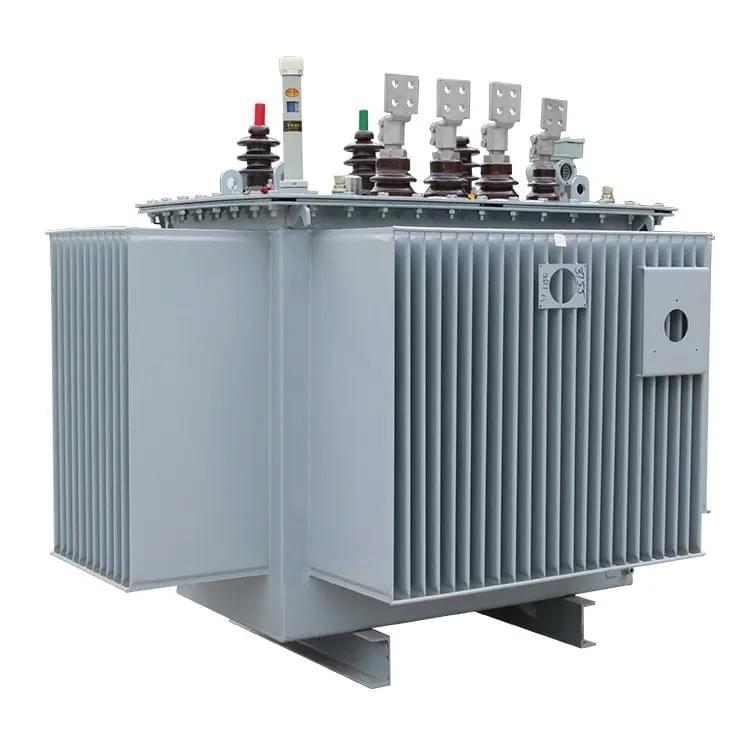Importance and Challenges of Transformers

In modern power systems, transformers play a crucial role, especially dry-type transformers. Dry-type transformers have significant advantages over traditional oil-immersed transformers, such as fire resistance, safety, and environmental friendliness. They are compact, lightweight, and suitable for environments with high fire safety standards. However, the performance of the dry-type transformer's insulation system, particularly the insulating layer, directly affects its stable operation and service life.
What is Flashover Discharge in the Insulating Layer?
The insulating layer of dry-type transformers is designed to prevent current leakage and maintain electrical performance. Flashover discharge in the insulating layer refers to electrical discharge phenomena inside the insulation, usually caused by high electric field intensity or the aging of insulation materials. Flashover discharge degrades the transformer's insulating layer, leading to a decrease in performance, and may eventually result in equipment failure or short circuits. Therefore, ensuring that the transformer insulation layer does not experience flashover discharge is critical to maintaining long-term stable operation.
Why is Flashover Discharge Detection so Important?
Flashover discharge in transformers not only accelerates insulation material aging but can also lead to dangerous accidents such as fires or short circuits. Particularly in transformers operating at high voltage, the electric field intensity in the insulating layer continuously increases, leading to flashover discharge. Regular inspection and monitoring of the dry-type transformer's insulation layer are essential to ensure the safety and performance of the equipment.
Detection Methods for Flashover Discharge in the Insulating Layer of Dry-Type Transformers

With the advancement of technology, various flashover discharge detection techniques have been developed. Below are some common methods used to detect flashover discharge in dry-type transformers.
1. Pulse Current Method
The pulse current method is widely used and aligns with international standards for transformer testing. This method involves applying pulse current signals to the transformer's insulation layer. When flashover discharge occurs, current pulses are generated. The detection system measures the variation in these pulses to accurately determine whether flashover discharge has occurred. This method has high sensitivity but is susceptible to interference from external environmental factors, leading to unstable data. Therefore, the pulse current method is typically used in laboratory environments or controlled testing settings.
2. Ultra High-Frequency Detection Method
Compared to the pulse current method, the ultra-high-frequency detection method has a significant advantage in resisting external interference. When flashover discharge occurs in a transformer, high-frequency electromagnetic waves are usually released. This method detects these waves to identify the discharge. The detection frequency range typically spans from 300 MHz to 3 GHz, providing more precise results and being suitable for complex industrial environments.
3. Ultrasonic Detection Method
The ultrasonic detection method works by detecting ultrasonic signals generated by flashover discharge inside the transformer. When flashover discharge occurs, it produces ultrasonic waves that can be captured and analyzed by ultrasonic sensors. This method offers the advantage of non-contact detection, but it is susceptible to interference due to the complex structure of the transformer. It is most effective when the discharge point is close to the sensor.
Case Study of Flashover Discharge in Dry-Type Transformers
In an inspection of three dry-type transformers at a substation, staff discovered a 15 cm-long flashover discharge mark on the high-voltage winding insulation of the first transformer. The temperature at this location was found to be abnormal, reaching as high as 45°C. Further inspection revealed that the second and third transformers also exhibited minor discharge traces at the same location. These findings indicated significant damage to the insulation layer of the transformers, requiring timely repair.
Causes of Flashover Discharge in the Insulating Layer
- Structural Issues in Dry-Type Transformers
The structural design and manufacturing process of dry-type transformers determine the thickness and sealing performance of the insulating layer. If the insulation is poorly designed or the materials have aged, the electric field intensity may increase, leading to flashover discharge. Additionally, dust and impurities on the transformer surface may serve as conductive paths, accelerating the deterioration of the insulation layer. - Environmental Factors
Environmental temperature, humidity, and dust accumulation can affect the operation of dry-type transformers. When transformers are exposed to high temperatures and humidity for extended periods, the insulating layer degrades, leading to flashover discharge. Regular cleaning and maintenance can effectively prevent such occurrences.
Defect Treatment and Preventive Measures
To prevent flashover discharge from occurring in the insulating layer, dry-type transformers require regular maintenance and inspection. Here are some effective measures to handle defects:
- Add Waterproof Insulation Material
Apply waterproof insulation material to damaged insulation layers to prevent moisture and humidity from further degrading the insulation performance. - Clean and Remove Dust
Regularly clean the transformer surface to remove accumulated dust and impurities, preventing them from causing discharge phenomena. - Install Insulation Barriers
Install insulation barriers in critical areas of the transformer to prevent local discharge caused by corona effects. - Increase Insulation Layer Thickness
In areas with high electric field intensity, appropriately increase the thickness of the insulation layer to reduce the risk of discharge and extend the transformer's service life.
Conclusion
Flashover discharge in the insulating layer of dry-type transformers is a significant issue affecting their performance and stable operation. By employing advanced detection technologies, conducting regular maintenance, and repairing defects, this problem can be effectively avoided, ensuring the long-term reliability of transformers. As manufacturers and users of dry-type transformers, understanding and mastering detection methods and treatment measures for flashover discharge will help us improve equipment reliability and safety.

At Hengrong Electrical, we understand that every detail in power control matters. From advanced product design to innovative filtering solutions, we are committed to delivering reliable, efficient, and future-ready technologies. By choosing Hengrong, you gain more than just products — you gain a trusted partner dedicated to helping your business achieve smarter, safer, and greener operations.
